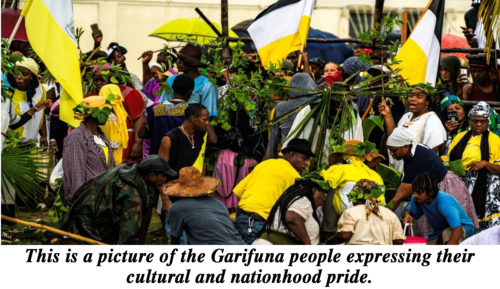by Wellington C. Ramos

The Garifuna nation flag, designed by Thomas Vincent Ramos in 1923
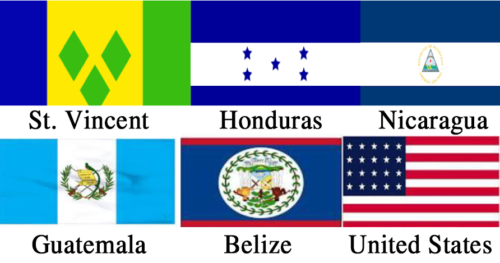
The Garifuna Nation has been existing for centuries before the Europeans ever dreamt of venturing into the Caribbean and American regions of this world.
The Garifuna people are a mixture of Arawak-Kalinagu people, who migrated from the Orinoco region in Latin America and then to the Lesser Antilles in the Caribbean Sea.
Then, around 1311 a King from the Mali Kingdom in Africa by the name of Mansa Abubakari 11 brought an expedition with 2,000 boats across the Atlantic to this part of the Caribbean and then some of his people intermingled with the Kalinagu people on the island of “Yurumein,” now known as Saint Vincent & The Grenadines.
From this union came this new ethnic group of people we know as Garifuna today. Together they were living in their nation state. The story that was written saying that they are the descendants of Africans from a slave ship that sank in the area is false, and it has been disputed by our ancestors through oral history, as well as many renowned historians, archaeologists and anthropologists.
The Spanish, after the Treaty of Tordesillas that was mediated between them and Portugal by Pope Alexander the V1 in 1494, came to the Caribbean and Americas and began colonizing the nations they found. They were the first people who attempted to invade the Kalinagu and Garifuna people’s country, but were defeated by them. They then labeled these people as “Caribs”.
That label was then continued by the Europeans, who went on to use the terms “Yellow Caribs” and “Black Caribs”.
Around 1640 the French invaded the countries in the region and attempted to take over Saint Vincent, and they too were defeated. The French later signed a treaty known as the Treaty of Saint Charles with the Kalinagu and the Garifuna, acknowledging their rights to their lands in 1660.
France and Great Britain went to war afterwards and the British defeated the French, who surrendered all their colonized territories to the British in the Treaty of Paris 1763.
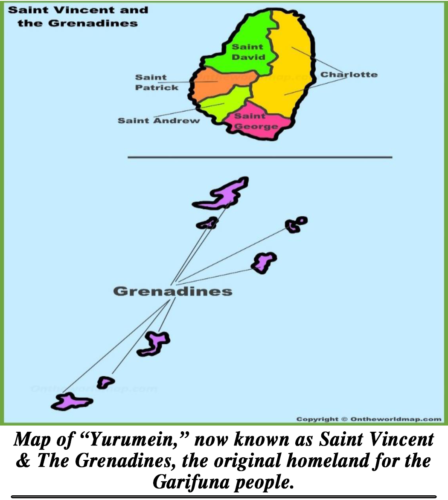
The British then came to try and take over the Garifuna and Kalinagu nation around 1773, but the Kalinagu and Garifuna people kept on fighting the British. In 1796 the British captured about 5,000 Garifuna people and imprisoned them at their Fort on Dorchester Hill on the island of Saint Vincent. From there they were removed to the adjacent island of Balliceaux, where they were unlawfully imprisoned, tortured, killed, and some of them were buried there. It is estimated that about 2,500 of these Garifuna people survived the genocide that was committed by the British against them on the island of Balliceaux.
Recent evidence was discovered in the British Archives by a Garifuna researcher, Andoni Castillo, that the British slaughtered some men, women and children numbering about 3,000 on the island a couple of weeks after they were imprisoned on the island. This information is available in a book that he published with the title, “Insurrectional Resistance.”
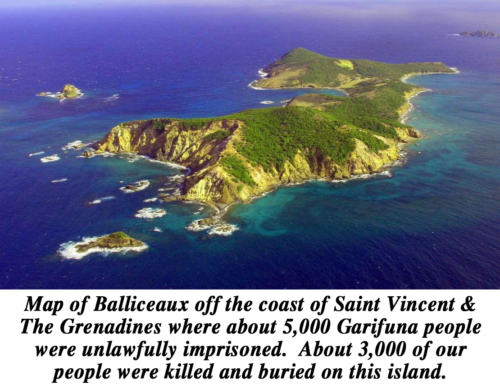
Another British researcher by the name of Tom Cotterill recently published an article stating that around that same time, Garifuna, Kalinagu and French soldiers were removed from Saint Vincent to Saint Lucia. From there they were taken to England, and upon their arrival they were imprisoned at Portchester Castle.
The French soldiers were delivered back to France in a prisoner of war exchange, but the whereabouts of the Garifuna and Kalinagu people who were imprisoned with them are still unknown up to today.

Portsmouth Castle where some Garifuna people who were removed from Saint Vincent were imprisoned and their whereabouts are still unknown up to today.
On March 11, 1797 the British sent some naval vessels to the island of Balliceaux and removed about 2,500 of the Garifuna survivors off the island and took them to the island of Roatan in Honduras, where they were left to die on April 12, 1797.
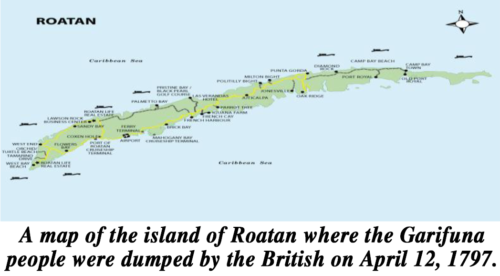
The Garifuna people were not happy with the living conditions on the island, so they decided to migrate to the mainland of Honduras and then subsequently to the countries of Nicaragua, Guatemala, Belize and later on the United States. Today, they live in all these countries, and it is estimated that there are about 600,000 or more Garinagu people living in this world.
Most of the Garifuna people in the world live in Honduras, and the second largest group live throughout several major cities in the United States of America like: Los Angeles, New York, Houston, Chicago, New Orleans, Las Vegas, Detroit, Boston and other cities.
They see themselves as one nation of people living in all these separate countries. The Garifuna Nation is proving the advocacy for their people to assert their Garifuna nationhood in all the countries where they currently reside. In addition, they are planning programs to improve their living conditions and to have their people assert their human rights as an autonomous nation of people in their countries.
